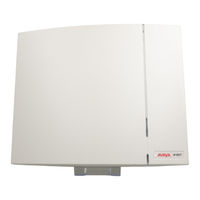User Manuals: Avaya IPBL IP-DECT Base Station
Manuals and User Guides for Avaya IPBL IP-DECT Base Station. We have 1 Avaya IPBL IP-DECT Base Station manual available for free PDF download: Installation And Operation Manual
Avaya IPBL Installation And Operation Manual (173 pages)
ip-dect base station and ip-dect gateway
Brand: Avaya
|
Category: Accessories
|
Size: 3 MB
Table of Contents
Advertisement
Advertisement
